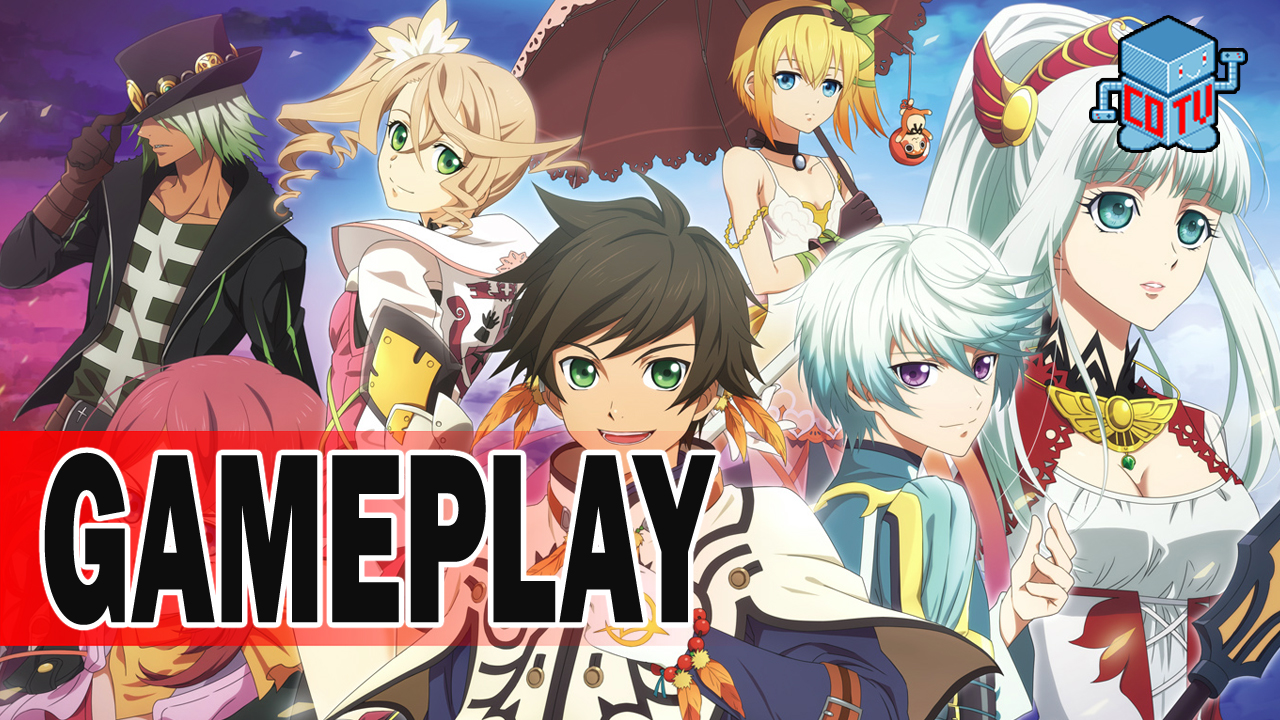When I reviewed the last Tales game from Bandai Namco – Tales of Xillia 2 – on the PlayStation 3, I liked the game itself, but felt like it was looking a little old on the previous gen. I was excited to see what Bandai Namco could do on the PlayStation 4. So, when they announced Tales of Zestiria would be arriving on the PlayStation 4, I was amped. Would they be able to bring that wonderful Tales experience successfully to the newest generation?
The answer is yes and no. I think that the transition to the PlayStation 4 went smoothly. The hand-drawn assets look fantastic as a cross between cel-shaded and watercolors. It improves the look while continuing the aesthetic of the Tales games. Bandai Namco and tri-Crescendo excel at giving each character his or her own distinct look and it continues to work in Zestiria.
One of the aspects I enjoy the most in Tales games is the overarching message of love, family and friendship. This is emphasized in every game and continues in Zestiria. Our main protagonist, Sorey, is one of the few humans who are able to see the spirits of the land, the Seraphim. It is through his friendships with the Seraphim and his ability to grow bonds with humans, he can bring them all together into tightknit bonds. Though I enjoy the overarching theme of the Tales games, I did not enjoy the story in Zestiria as much as I have enjoyed some of their stories in the past as I did, say with Xillia 2 or Tales of Hearts R. The one aspect I did appreciate is Zestiria’s take on the hero role. In many games, the hero is “destined” or “fated” or “doomed” to inherit the mantle of savior. Zestiria takes a different approach in that Sorey makes a conscious decision to take on the responsibility of being the hero rather than reluctantly taking it on. This is a theme throughout the game in that the choices we make have repercussions we don’t know will affect us later on in life. This is a welcome change in hero narrative, especially in a Japanese Role Playing Game such as this.
Of course, a JRPG would not be without systems and collectables. First, the Tales battle system is an action battle sequence, meaning once you are in battle, you must actively attack the enemies in the arena. The Tales’ battle system is tried and true. In Xillia 2, they focused on the “friendship link” between two companions that allowed combined efforts. In Zestiria, Bandai Namco built further on this with the link between the humans and the seraphim. Instead of two characters working in concert, there is now a skill to “Armatize” leading the human and seraph to become one superpowered being. The character transforms into this superbeing with a completely new set of powerful moves focus on the elemental of the seraphim he/she completes armatization. The fire seraph, Lailah, gives Sorey a giant sword. The water seraph, Mikleo, uses a bow and ranged attacks. The earth seraph, Edna, provides powerful rock boxing gloves to pummel enemies, and so on. These power-ups are an essential part of battle because even on Normal difficulty, you can find yourself getting overwhelmed in battles.
That is one aspect I did not love in Tales of Zestiria. Normally, in JRPGs, you can take a little time to grind out some levels and maybe be a little overpowered going into a tough area. Personally, I like it because I can zone out and just enjoy beating on enemies. In Tales of Zestiria, it just doesn’t feel satisfying or worthwhile. I spent some time killing mobs, getting 60-80 experience per battle. Then, I decided to push the story forward and beating a small boss garnered me 2000+ experience. It just never felt worth it to me to continue grinding.
The skills and crafting systems are some of the most complicated I’ve seen in a Tales game to date. There are roughly 50 buffs/boosts that are broken down into 5 categories – non-elemental, fire, water, earth, and wind. Each weapon or armor could have one or more of these buffs – such as +8 to Attack or +8 to Defense. The item may have multiple buffs in the same element or multiple buffs to the same skill (attack, defense, arte attack) but across different elementals. By using different items in tandem, you can build combinations, called unions, to build upon those buffs. Each character has a chart that shows all the buffs and the items that are activated on those buffs. You can then see how the items work in tandem on this chart to see how the unions build vertically (across elementals) or horizontally (within one elemental). On top of that, you can fuse items with identical names. For example, if you have an elven circlet with an attack and arte attack buff and one with a defense buff, you can fuse them to possibly add the defense buff to the attack buffs, creating a stronger item. As you can imagine, it adds several levels of complexity to an already complex systems of control in the game.
Tales of Zestiria Review Final Thoughts:
Overall, Tales of Zestiria is a solid Japanese Role Playing Game. Fans of the Tales series, who are looking for the jump to next generation consoles, will likely want to pick this up just to see how well it makes the jump from the PlayStation 3 to the PlayStation 4. Those unfamiliar to the series may want to hold off as Zestiria is not the most-welcoming to newcomers with its overly complex systems. Still, I enjoyed my experience with the game and look forward to the next installment in the series.
